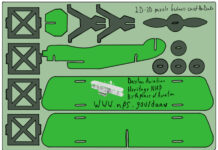Co-working spaces (CWSs) have emerged as a distinctive phenomenon in the sharing economy. They are collaborative environments that feed innovation and creativity under the slogan “working alone together”. While policy makers and scholars were optimistic about their role in promoting entrepreneurial endeavours and fostering growth, the spread of the COVID-19 across the world has drastically changed the way we work, communicate, and navigate daily life.
During the past decade, the pressure for adopting green practices has mounted, not only at the corporate but also at the individual level. Businesses and people are seeking more sustainable ways to live and work. Within this context, we have witnessed the rise of the sharing economy across a wide range of industries, including the proliferation of a number of shared office spaces in and around cities [1]. These spaces—commonly referred to as co-working spaces (CWSs)—are collaborative environments which are found to feed innovation and creativity.
One of the main drivers for this growth has been the rise of a new generation of workers—mainly entrepreneurs and freelancers—which are disrupting the traditional way of how and where to work, by breaking down corporate hierarchies, dismantling mentalities, redefining social norms and increasingly experimenting with new work practices and unconventional offices [9]. The pace of globalization and the new advances in digital and mobile technologies have further enabled professionals to work from almost anywhere [10]. Likewise, the adoption of agile and lean practices has altered fundamental aspects of the work culture and requires new approaches that are better suited to the current needs. Coffee houses, libraries and hotels offer the attractiveness of being intermediate spaces between home and work, away from distractions. At the same time, they provide a social and inspiring atmosphere. However, a common drawback of these spaces is that their primarily purpose is not to provide a collaborative environment to work [11], but instead, a place where to drink a coffee, read a book or stay one night. CWSs do fulfil the above requirements.
CWSs are found to be spatially concentrated within the inner precincts of urban environments. The urban setting nurtures the emergence of a synergistic innovative community where the density of infrastructure and the culture of the city support the interaction among the components. The thrilling atmosphere of the inner-city neighbourhoods is a huge magnet for millennials, a generation with strong propensity for walkable areas that enable them to live close to their friends and the amenities they need. However, at a time when social distancing is one of the best tools we know to slow down the spread of the coronavirus, how will the geography of CWSs be affected? What is the impact on the urban environment? These questions are remarkable if we consider the indirect effects of CWSs on the urban context (gentrification of spaces, the development of liveable mixed-use infrastructures, the presence of restaurants, the organization of cultural venues, etc.).
Even in a pandemic situation, CWSs are sustainable pillars for the development of urban ecosystems and can act as serendipity accelerators for the development of innovative communities. Besides offering work spaces, their role is to facilitate networking opportunities with the community (e.g., universities and research centres, entrepreneurs, investors, major corporations and government). This role is of extremely importance at a time when the economy is still suffering the economic ill-effects of not just of the pandemic by itself but also of its collateral effects (e.g., protracted lockdown and market uncertainty).
Analysis
This article brings up two things not yet discussed in articles I’ve pulled: gentrification and the pandemic. Co-working spaces are economically supportive of the community, as they invite working individuals to the community. Not only will jobs be made and positions brought back, with the end of the pandemic in sight, being able to provide a workspace for innovative thinkers is also a great impact that this designed space could support. As this project focuses on the post-pandemic professional workspace, I believe that workers will be even more drawn to a space to collaborate together. I’d like to discuss the topic of gentrification even further with another article, but this one is still relevant as it touches on the overall pieces of the urban jungle in which a revamped space would impact. The next generation of workers, with a unique mindset is one finding non-traditional ways to do work; the re-designed co-working space needs to break the social norms, but still fit seamlessly into the urban scene.




